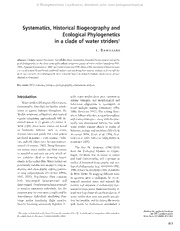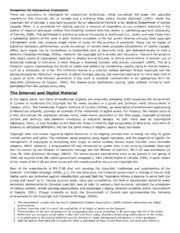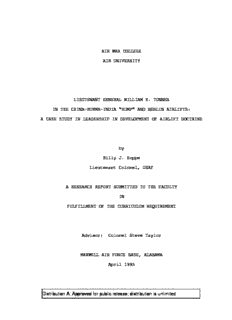
Lt Gen William H. Tunner in the China-Burma-India "Hump" PDF
Preview Lt Gen William H. Tunner in the China-Burma-India "Hump"
AIR WAR COLLEGE AIR UNIVERSITY LIEUTENANT GENERAL WILLIAM H. TUNNER IN THE CHINA-BURMA-INDIA “HUMP” AND BERLIN AIRLIFTS: A CASE STUDY IN LEADERSHIP IN DEVELOPMENT OF AIRLIFT DOCTRINE by Billy J. Hoppe Lieutenant Colonel, USAF A RESEARCH REPORT SUBMITTED TO THE FACULTY IN FULFILLMENT OF THE CURRICULUM REQUIREMENT Advisor: Colonel Steve Taylor MAXWELL AIR FORCE BASE, ALABAMA April 1995 DISCLAIMER This study represents the views of the author and does not necessarily reflect the official opinion of the Air War College or the Department of the Air Force. In accordance with Air Force Regulation 110-8, it is not copyrighted, but is the property of the United States government. Loan copies of this document may be obtained through the interlibrary loan desk of Air University Library, Maxwell Air Force Base, Alabama 36112-5564 (telephone [334] 953-7223 or DSN 493-7223). ii ABSTRACT TITLE: Lieutenant General William H. Tunner in the China-Burma- India “Hump” and Berlin Airlift: A Case Study in Leadership in Development of Airlift Doctrine AUTHOR: Billy J. Hoppe, Lieutenant Colonel, USAF Airpower in the early part of the twentieth century was dominated by the development and demonstration of the power of the strategic bomber and the high performance fighter. Yet, airlift, one of the last elements of airpower to emerge from this era, proved to be one of the most instrumental in our nation’s ability to project power quickly throughout the world by moving large numbers of men and materiel. This is due primarily to the leadership of Lieutenant General William H. Tunner. During the decade of the 1940s, Tunner and his “hand picked” staff of innovators developed early airlift doctrine during the “Hump” airlift of World War II and the Berlin Crisis of 1948-1949 that remains as the foundation for much of today’s airlift doctrine. Through Tunner’s innovative ideas to change and leadership by example, he was able to turn potential disaster in both scenarios into unbelievable demonstrations of the strength of this new arm of airpower. iii BIOGRAPHICAL SKETCH Lieutenant Colonel Billy J. Hoppe is a career KC-135 tanker pilot with a deep interest in the heritage of the early days of airlift. This interest has its roots from his many “hanger flying” sessions with his father-in-law, Lieutenant Colonel(ret) George V. Pruitt, who accumulated over 800 hours of flying time in C-47s and C-46s during the Hump and Berlin airlifts. Lieutenant Colonel Hoppe is a 1974 graduate of Texas A & M University. His professional military education includes Squadron Officer School, Air Command & Staff College, and Air War College. iv TABLE OF CONTENTS DISCLAIMER...............................................p. ii EXECUTIVE SUMMARY........................................p. iii BIOGRAPHICAL SKETCH......................................p. iv CHAPTER I: INTRODUCTION.........................................p. 1 II: EARLY AIRLIFT DOCTRINE DEVELOPED: THE “HUMP” OPERATION............................................p. 3 III: AIRLIFT DOCTRINE TESTED: THE BERLIN CRISIS...........p. 13 IV: CONCLUSIONS..........................................p. 25 BIBLIOGRAPHY.........................................p. 28 v CHAPTER ONE INTRODUCTION Of all the elements of air power developed in the early twentieth century, one of the latest to emerge was airlift. Until World War II, airlift was virtually ignored by military aviators in the United States. The power of strategic bombing and the development of high performance fighter aircraft captivated air power enthusiasts. The doctrine and procedures to move large numbers of men and tons of materiel by air were not yet needed. Therefore, they were not developed.1 Today, airlift sits proudly alongside other aerospace missions and is a vital element of the force enhancement role of aerospace power. Airlift provides the capability to "rapidly transport materiel and personnel without regard to surface obstacles to project power to any location in the world."2 It is the backbone of the GLOBAL REACH portion of our Air Force concept of GLOBAL REACH-GLOBAL POWER. Yet barely fifty years ago there was no organization in American military aviation to provide for the delivery of materiel or personnel3. It is my proposition that this tremendous transformation is due primarily 1 Tunner, William H., Over the Hump, Washington, DC: Office of Air Force History, 1985, p vii. 2 Air Force Manual 1-1, Vol. I, Basic Aerospace Doctrine of the United States Air Force, 1992, p 6-7. 3 Glines, C. V., "Flying the Hump”, Air Force Magazine, Air Force Association, March 1991, p 102. 1 to the leadership of one airlift pioneer--Lieutenant General William H. Tunner. The purpose of this paper is to analyze General Tunner's leadership qualities that contributed so greatly to the development of the modern concept of airlift. In particular, I will examine Tunner’s leadership style and the innovative programs he developed, tested, and refined during the decade of the 1940s in the Air Transport Command. First, I will analyze his contributions to the China-Burma-India “Hump” airlift of World War II, the first massive airlift operation in the Army Air Force’s history. Next, I will examine how the leadership techniques and flying innovations he developed during the Hump operation were validated only five years later during his command of the Berlin airlift, the most massive humanitarian airlift operation in history.4 Finally, I will analyze how the ideas developed during Tunner’s decade of command established the foundation for much of current air mobility doctrine. 4 Prochoroff, Alan, “Airlift for Freedom”, SERGEANTS, September 1988, p 10. 2 CHAPTER TWO EARLY AIRLIFT DOCTRINE DEVELOPED: THE “HUMP” OPERATION In March 1942 the Japanese occupied Burma and sealed off the Burma Road, the only ground supply route over the Himalayan Mountains available from British-held India to western China. It was essential to provide supplies to the Chinese and American armies in mainland China as they engaged a force of over one million Japanese troops. President Franklin D. Roosevelt announced "The Japanese may have cut the Burma Road, but ... ways will be found to deliver airplanes and munitions to the armies in China."5 The "way" was the development of the first "air bridge" in U.S. military history. This "air bridge", commonly referred to as the "Hump", was a 500-mile route over the awesome and uncharted three-mile-high peaks of the Himalayan Mountains. For the remainder of the war, the Hump operation was the sole source of supplies to the Chinese and Americans attempting to contain the large Japanese forces on the Chinese mainland. The goal of the Air Transport Command's India-China Division was to initially deliver 2,500 tons of supplies during the early months, steadily increasing the monthly tonnage to 10,000 by the 5 Kownig, William J., Over the Hump: Airlift to China, New York, Ballentine Books, Inc., 1972, p 18. 3 end of 1942.6 This was no small task even in favorable conditions, but the Far East environment was far from favorable. When operations over the Hump began in April of 1942, any successful flight was considered a miracle. The route itself is considered the most dangerous ever assigned to air transport7. Aircrews, flying ill-equipped C-47s and C-46s, lived in the most terrible conditions known to the military forces of the time8. The weather was notorious. When the area was not receiving part of its over 200 inches of annual rainfall, the shade temperatures were so hot that it could cause second degree burns to unprotected skin9 . In the air, conditions did not improve. Aircraft service ceilings often prohibited crews from climbing above the dense cloud covering of the mountain range. Navigational aids in the area were unreliable. Extreme turbulence near the mountains was yet another danger.10 Aircraft maintenance was poor. Spare parts were in short supply, and maintenance personnel were inexperienced and worked in the same austere environment as the flight crews11. Accidents mounted. 6 Report on "History of Air Force Activities: China Theater (1942-1945)", Prepared by HQ, AAC, China Theater, p 1-5. 7 Glines, C. V., "Flying the Hump", Air Force Magazine, Air Force Association, March 1991, p 103. 8 Tunner, William H., Over the Hump, Washington DC: Office of Air Force History, 1985, p 57. 9 Glines, C. V., "Flying the Hump", Air Force Magazine, Air Force Association, March 1991, p 103. 10 Ulanoff, Stanley, M., MATS: The Story of the Military Air Transport Service, Franklin Watts, Inc., 1964, p 18. 11 Report on "India-China Division of Air Transport Command During General Stillwell's Command", December 1942 to October 1944, p 1. 4 In spite of all these factors, the tonnage output continued to increase, but so did the loss of aviators and aircraft. In January 1944, every two hundred trips over the three and one-half hour trek resulted in the loss of an aircraft. For every one thousand tons flown to China, three Americans gave their lives12. Needless to say, morale was very low. On 3 September 1944 Brigadier General William H. Tunner took command of the India-China Division of the Air Transport Command (ATC). His tasking from General Harold George, ATC Commander, was twofold: increase tonnage of supplies to be airlifted to China and simultaneously lower the terrible accident rate1.3 A certain byproduct would be an improvement in morale. Tunner brought an innovative leadership style to the Hump operation that he had demonstrated earlier as commander of ATC's Ferrying Command. He had a great propensity to match the right person to the right job, and he knew the success of meeting General George’s orders lay in the hands of the Division's key leadership positions.14 He went right to work picking his own key staff members. He took Temple Brown, an innovative, self-made businessman who had experience in operating a regional airline and a commercial bus fleet, commissioned him as a Major, and assigned him as Chief of Supply. Tunner selected Lieutenant Colonel Robert 12 Tunner, William H., Over the Hump, Washington DC: Office of Air Force History, 1985, p 55. 13 Ibid., p 52. 14 Ibid., p 64-65. 5
Description:The list of books you might like

What Happened to You?

Can’t Hurt Me: Master Your Mind and Defy the Odds

Do Epic Shit

The Spanish Love Deception

The sign & its masters

L'apprendista del mago
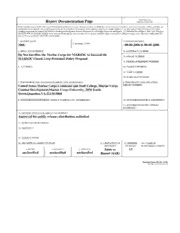
DTIC ADA509401: Do Not Sacrifice the Marine Corps for MARSOC to Succeed the MARSOC Closed Loop Personnel Policy Proposal
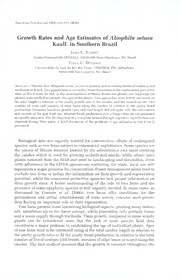
Growth Rates and Age Estimates of Alsophila setosa Kaulf. in Southern Brazil

Secret of the Ring Muscles

نقد القِيَم The Criticism of Values
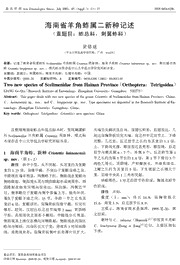
Two new species of Scelimenidae from Hainan Province (Orthoptera:Tetrigoidea)

Cities in South Asia
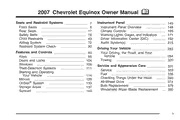
2007 Chevrolet Equinox Owner Manual
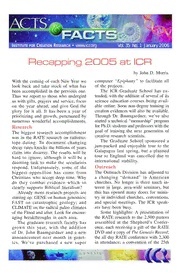
Acts & Facts Vol. 35 No. 1 January 2006

Building Product Models: Computer Environments, Supporting Design and Construction

Missouri Official 2005 State System Mileage

Unambiguous pure state identification without classical knowledge

Greek Government Gazette: Part 7, 2006 no. 914
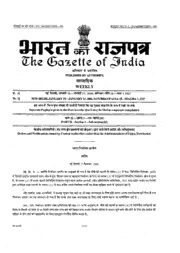
Gazette of India, 2006, No. 62

Greek Government Gazette: Part 7, 2006 no. 918

Справочник по гидротехнике. Разделы 1 и 2

A Companion to Spanish Women's Studies
